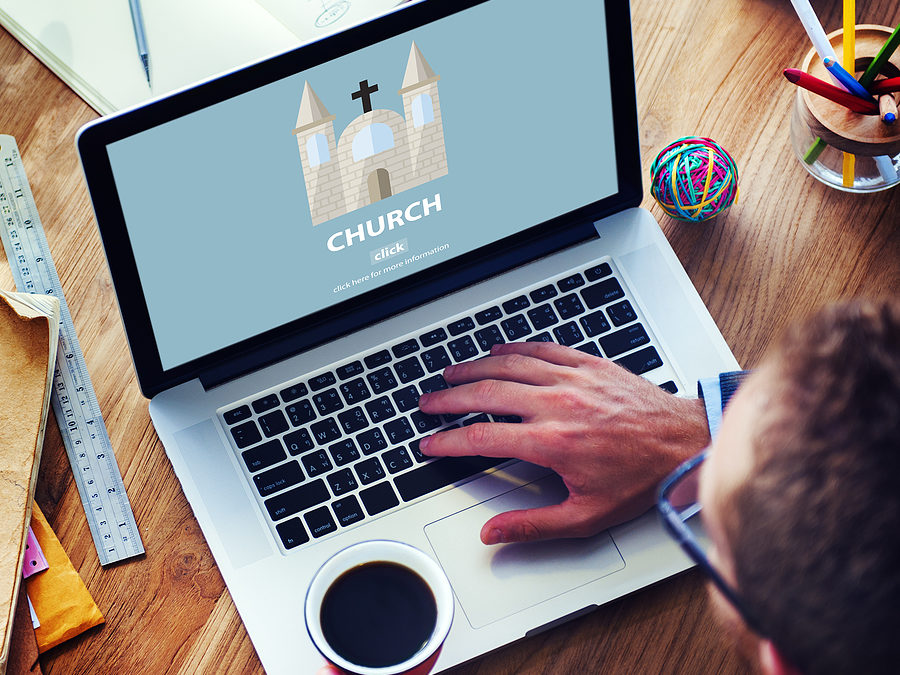
Has the Mission of the Church Changed?
In the aftermath of a global pandemic, many churches are reconsidering and redefining their mission. They’ve shifted their focus, bringing the church’s mission into a more tangible and purpose-driven outlook.
But, has the mission of the church really changed? There are two answers to that question. First answer: no. Second answer: yes. Let’s dive into this conundrum, starting with the “no.”
As followers of Jesus, we are guided by his call to action—the Great Commission. Jesus declared, “I have authority over all things in heaven and on earth. So, go and lead people unto me, baptizing them in the name of the Father, the Son, and the Holy Spirit. Teach them to follow everything I have taught you. Be assured; I will be with you always, even until the end of time.”
Seems pretty straightforward. We are to go far and wide to make disciples, baptize, and pass on what we have learned from Jesus. This is a word-of-mouth endeavor authorized by Jesus himself. In all the centuries since Matthew first wrote these words, these marching orders have not changed.
What has changed, though, is how we make disciples. Due to the pandemic, the current state of the church, disaffiliations, and political disputes, we have had to innovate how we reach people.
It’s no surprise that how we interpret the Great Commission has changed, however, many churches and leaders are not adapting. As a coach and consultant, I work with church leaders at all different stages. Trust me, I know some churches and leaders are not changing, but others are. Pastor Scott Himel is one leader piloting change and Creating a Culture of Renewal® in his local church. Pastor Scott was dealing with issues surrounding insider/outsider culture, achieving success in the church’s outreach, and anxieties from his congregants about returning to in person worship. On top of that, his church was facing a $34,000 shortfall in its annual budget.
However, with some creativity and intentionality, he was able to turn it around.
The Myth that Nothing Should Change
Just because Jesus is the same yesterday, today, and consistently doesn’t mean how we share the Gospel remains the same. It has to change with the times. In the early days of George Whitefield and John Wesley’s preaching, they took their message directly to colliers or coalminers and gathered people in bands and classes to grow in covenantal Christian relationships. Today, people watch YouTube videos or Facebook Live for spiritual sustenance.
The misconception that the church should remain static disregards the need to adapt to a constantly evolving society. Pastor Scott is an example of a church leader who saw the value of creative adaptation.
Volunteers are not just the people you see in the pews on Sunday mornings; sometimes, God has a bigger vision! When he struggled to find dependable and dedicated volunteers, Pastor Scott didn’t give up. Instead, he appointed a remote church member to coordinate volunteer recruitment. This innovative approach not only helped his church thrive; he notes that the volunteers are seeing the missional significance of their service.
It’s Not About Making Your Church Better
Today, many congregations live out disciple-making by focusing on strengthening their church and attracting people to it. In this model, a big, busy, active church equals disciple-making and is seen as the fulfillment of Jesus’ Great Commission. I call this model “the church improvement plan”.
There is nothing inherently wrong with this model; in years past, the church improvement plan of disciple-making worked well. Those years, however, were well over even before the pandemic began. The steady decline of active church participation over the last five to seven decades points to that reality.
But because this model has been so ingrained in the culture of many congregations, it has been hard to let it go. Or to envision what is next. But if you don’t spend time discovering what is next, you will neglect new ways of implementing the Great Commission.
Getting caught up in the grand plan for improving the church is easy, but even small changes can have a significant impact. Pastor Scott recognized this and found that even minor adjustments can lead to a remarkable increase in engagement. As part of his work in Creating a Culture of Renewal®, he launched a new stitchers group which has attracted several women and has seen attendance at the Lay Leader’s once-a-month Coffee grow.
But it’s not just about these visible actions. Behind the scenes, conversations are happening about how the church can provide more opportunities for people to experience a sense of belonging. These conversations highlight the importance of creating a community that nurtures relationships, fosters dialogue, and offers an open space for spiritual growth.
How Do We Make Disciples Today?
As we navigate the post-pandemic world, the question of how to make disciples remains at the forefront of the church’s mission. There are three key areas that we can focus on to move forward: developing fresh expressions, keeping hybrid connections alive, and refreshing our leadership skills.
Initiatives like “Pub Theology” or “Bible and Beer” meetings offer unique opportunities to connect with people and deepen their spirituality in non-traditional settings. Nature, too, can provide a very spiritual setting for gathering. Hiking, camping, talking around a campfire – all of these can bring people together who might be reluctant to meet in a more traditional church environment. Being creative can allow us to meet people where they are and lead them into discipleship through meaningful relationships.
The pandemic has shown us that we don’t need buildings to be the church. By keeping hybrid connections alive, we can continue to connect with people from all over the world. This allows us to break geographical barriers and build fellowship across state lines, regional boundaries, denominations, and leadership roles.
Pastor Scott’s remote volunteer recruitment initiative highlights the importance of refreshing your leadership skills in these times. Staying relevant and connected requires us to learn new ways to navigate relationships, up our emotional intelligence, and adapt to meet people where they are. As Pastor Scott has shown, we can create a vibrant and inclusive community by embracing change and adopting innovative approaches.
If you’re overwhelmed by the challenges facing your church community, know you’re not alone. With creativity, intentionality, and openness, you can transform your ministry and connect with people in new and meaningful ways. To learn more about how to do just that, join me for my upcoming free webinar on “How Christian Ministries are Achieving Success: An Introduction to Creating a Culture of Renewal®.” We’ll explore practical strategies for achieving success and building a culture of renewal to your church ministry.
Together, let’s take the first step towards creating thriving church communities that truly reflect the love and grace of God. Reach out for a one-on-one conversation to discover how you can join me on this transformation journey!
Adapted from “Forging a New Path: Moving the Church Forward in a Post-Pandemic World”, Rebekah Simon-Peter, Market Square Books, 2022.
Copyright © 2023 rebekahsimonpeter.com. All Rights Reserved.




